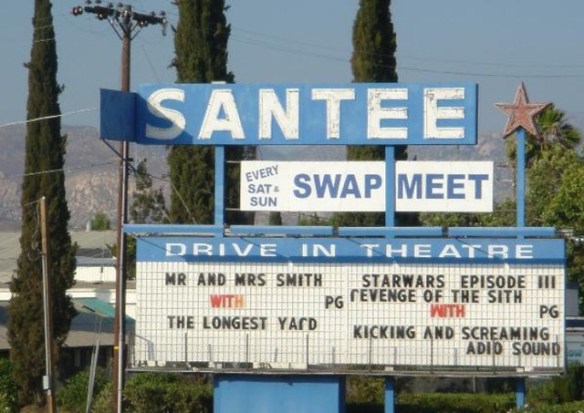
Which is better? To have a drive-in suddenly close, as Mitchell SD’s Starlite did this week? Or to know that a local drive-in is on borrowed time, giving patrons an opportunity to pay their respects? Given that unhappy choice, I’d pick the latter, so that’s a small bit of comfort that comes with today’s news that the Santee Drive-In Theatre is in escrow to a company that erects large industrial buildings.
The East County Magazine reported today that the Santee is in escrow to North Palisades Partners from Los Angeles. A city official said that North Palisades has filed for approval to build a 291,000-square foot edifice on the site, and that the approval process would take “at least six months.”
What of the Santee’s current, or is that previous owners? On its web site and Facebook page, the drive-in is still promoting movies, selling merchandise, and hosting a popular swap meet, all with no mention that 2023 might be its final season. The magazine article said that requests for comment went unanswered, and the city official said that the owners “don’t want to answer questions about the closing.”
So there you have it. If you live anywhere near the Santee, this might be your chance for one last visit. It’s sad to see venerable drive-ins close just for redevelopment, but it least we got a bit of warning this time.
Update: Somebody, maybe the owners, has been adamant in stressing that the Santee hasn’t been actually sold yet; it’s still in escrow. Which is a necessary step that one normally undertakes only with the goal of selling, but yeah, that’s true.


